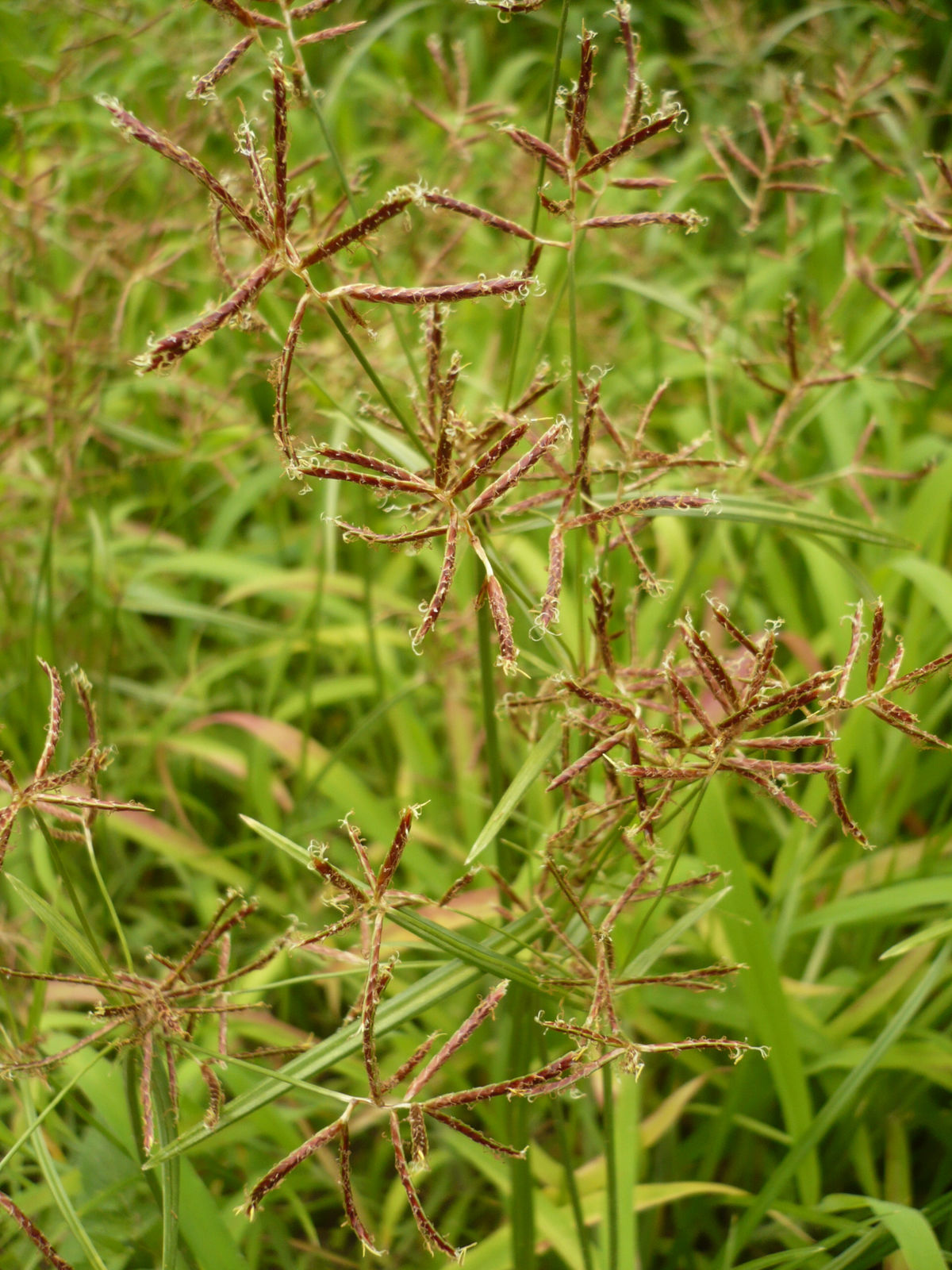DEPARTMENT OF BOTANY
MEDICINAL PLANTS
Cyperus rotundus L.
Cyperus rotundus, commonly known as nutgrass, purple nut sedge, or demon grass, is a perennial herb in the Cyperaceae (sedge) family. It is known for its strong, invasive growth and is often considered a noxious weed in many parts of the world.
Family: Cyperaceae
Common Names:
• Malayalam: : Kuzhimuthanga, Muthanga, കുഴിമുത്തങ്ങ, മുത്തങ്ങ
• Tamil: Kallarundhri (கல்லருந்தி)
• English: Nutgrass, Purple Nut Sedge
Botanical Description:
• Habit: Cyperus rotundus is a perennial, grass-like herb that typically grows in clumps.
• Stem: The plant has slender, triangular stems, usually growing 30–60 cm tall. The stems are light green to reddish in color.
• Leaves: Long, narrow, linear leaves that are arranged in a rosette-like manner at the base. The leaves are about 30–60 cm long, linear, and pointed.
• Inflorescence: The flower head consists of small, inconspicuous flowers arranged in a cluster, often appearing in groups at the tip of the stems. The flower clusters are often purple, making the plant recognizable.
• Roots: The plant has thick, tuberous, and round rhizomes which are purple or brownish, typically used for medicinal purposes.
• Fruit: The plant produces a small, oval-shaped nutlet as the fruit.
Synonyms:
• Cyperus prostratus (Burman f.)
• Cyperus reptans (L.)
• Cyperus sphaerocephalus (Rottb.)
Uses:
• Medicinal Uses:
o The tubers of Cyperus rotundus are commonly used in traditional medicine across various cultures. It is used to treat digestive problems, diarrhea, and to promote better digestion.
o It has anti-inflammatory, analgesic, and antibacterial properties.
o In Ayurveda, the tubers are used for treating conditions like dysentery, fever, and as a natural diuretic.
• Aromatic Uses: The plant is sometimes used as a natural aromatic in food preparation and traditional herbal teas.
• Agricultural Uses: Cyperus rotundus is considered a problematic weed in many agricultural fields, especially in rice and other crops, due to its ability to reproduce quickly and outcompete other plants.
• Cosmetic Uses: Due to its soothing properties, the plant has also been used in some traditional cosmetic preparations, such as oils and lotions for skin care.
• Other Uses: The plant is sometimes used in folk medicine for treating ailments related to the nervous system and for its role in detoxification of the body.
